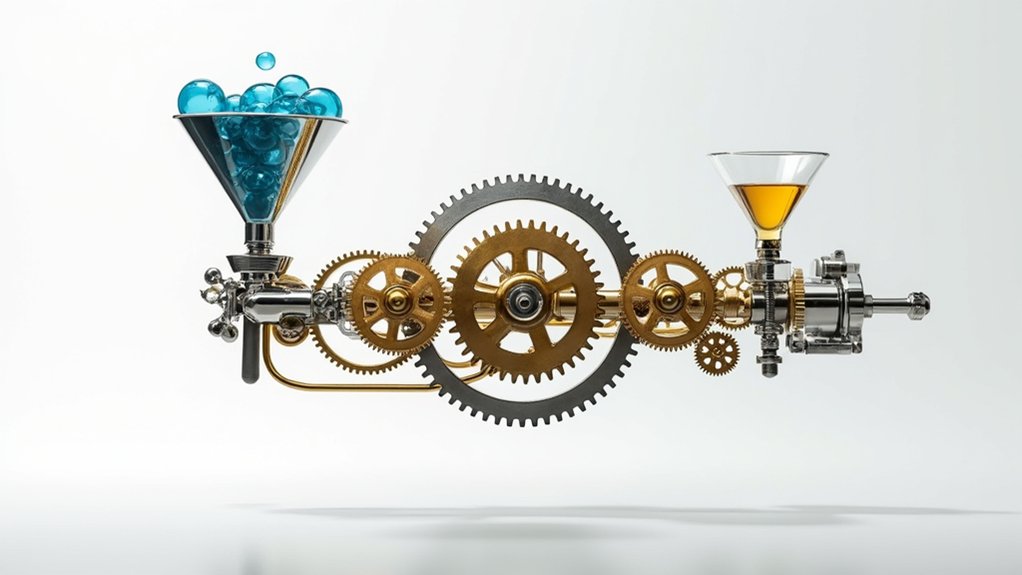The most effective lead magnet promotion in 2025 requires portfolio-style diversification across channels while maintaining institutional-quality standards—embedding magnets contextually within blog posts rather than relegating them to sidebar obscurity, employing surgical email segmentation with exclusive early access offers, and adapting platform-specific social media strategies with proper mobile optimization. Successful practitioners focus firepower on fewer, higher-caliber channels while tracking analytics for empirical optimization, avoiding the spray-and-pray desperation that characterizes amateur efforts. Strategic timing and patience yield superior returns.

How does one transform a meticulously crafted lead magnet into a conversion-generating asset when the digital landscape resembles a cacophonous marketplace where even the most valuable offerings risk disappearing into algorithmic obscurity?
The answer lies in recognizing that lead magnet promotion operates on principles eerily similar to portfolio diversification—spread the risk across multiple channels while maintaining quality standards that would make even the most discerning institutional investor nod approvingly.
Quality consistently trumps quantity in this equation, much like how a concentrated position in undervalued securities often outperforms scattered investments in mediocre assets.
Focus your promotional firepower on fewer, higher-caliber channels rather than diluting impact across every available platform.
Strategic blog content integration represents the foundational approach, embedding lead magnets contextually within relevant posts rather than treating them as afterthoughts relegated to sidebar obscurity.
This methodology mirrors successful value investing: patience, positioning, and proper timing yield superior returns compared to desperate promotional tactics that scream “buy now” with all the subtlety of a carnival barker.
Email marketing segmentation operates with surgical precision, targeting specific audience segments rather than employing the spray-and-pray methodology that characterizes amateur hour operations. Including lead magnets in your email newsletters allows existing subscribers to be among the first to access valuable new content offerings.
Exclusive offers create artificial scarcity (a psychological trigger that remains frustratingly effective despite its transparent manipulation), while follow-up sequences nurture prospects through systematic touchpoints that would impress even the most methodical CRM strategist.
Social media promotion demands platform-specific adaptation—what resonates on LinkedIn’s professional ecosystem rarely translates effectively to Instagram’s visual-centric environment. Understanding that mobile optimization ensures maximum accessibility since prospects increasingly consume content through smartphones and tablets rather than desktop computers.
Paid advertising amplifies reach while influencer partnerships provide third-party credibility, assuming one can navigate the minefield of authentic versus manufactured endorsements.
Landing page optimization represents the final conversion checkpoint where design principles meet behavioral psychology.
Clear call-to-actions eliminate decision paralysis, minimal distractions focus attention, and mobile responsiveness accommodates the reality that most prospects browse while simultaneously managing seventeen other digital tasks.
Testimonials and reviews provide social proof—that peculiar human tendency to seek validation from strangers before making seemingly rational decisions.
Strategic partnerships and guest blogging opportunities extend promotional reach without proportional cost increases, leveraging other organizations’ audiences through mutually beneficial arrangements.
Analytics tracking throughout these channels provides performance data essential for optimization, because promotional strategies without measurement resemble investment decisions based purely on intuition rather than empirical evidence. Trade shows represent another powerful promotional avenue where lead magnets can capture quality leads through direct engagement with prospects who have already demonstrated interest by attending industry events.
Frequently Asked Questions
How Often Should I Update My Lead Magnet Content?
Lead magnet content requires updates every 12-18 months for whitepapers, though dynamic industries demand quarterly refreshes.
Smart marketers monitor conversion rates religiously—a 20% drop signals urgent revision needs.
Data-driven reports become stale annually (faster in tech’s relentless churn), while calculators need parameter tweaks every 3-6 months.
The versioning strategy proves particularly clever: date-stamped editions (“2025 Edition”) create artificial scarcity, encouraging re-downloads from existing subscribers who somehow survived the initial value proposition.
What’s the Ideal File Size for Downloadable Lead Magnets?
The ideal file size for downloadable lead magnets hovers between 1-5MB, though marketers routinely ignore this wisdom in favor of bloated presentations that would make dial-up users weep.
PDFs should compress to under 2MB (SmallPDF handles this admirably), while image-heavy guides can stretch to 5MB without triggering user abandonment.
Beyond 10MB, conversion rates plummet faster than a poorly diversified portfolio—mobile users simply won’t tolerate the bandwidth assault.
Should I Gate My Lead Magnet Behind Multiple Form Fields?
Gating lead magnets behind multiple form fields represents a classic optimization fallacy—the misguided belief that more data equals better results.
Conversion rates plummet inversely with field count, particularly on mobile devices where user patience evaporates faster than venture capital during market corrections.
Smart marketers stick to email-plus-name combinations, reserving additional data collection for progressive profiling after initial conversion.
Why sacrifice lead volume for information that sophisticated segmentation can often infer anyway?
How Do I Track Which Promotion Channel Converts Best?
Marketers implement UTM parameters across promotional channels while configuring Google Analytics event tracking to monitor lead magnet downloads.
They analyze channel-specific conversion rates—comparing email marketing metrics (open rates, CTR) against social media analytics and paid advertising performance (CPC, conversion rates).
Smart practitioners leverage A/B testing different promotional materials while tracking customer journey mapping to identify bottlenecks.
The data reveals which channels deliver that coveted 5-15% conversion rate benchmark.
Can I Use the Same Lead Magnet Across Different Industries?
Using identical lead magnets across industries typically yields suboptimal results, as targeted content addressing specific pain points consistently outperforms generic alternatives.
While repurposing core frameworks proves feasible, smart marketers customize messaging, terminology, and case studies for each sector.
Industry-specific adaptations—whether adjusting a financial template for healthcare or retail—demonstrate substantially higher conversion rates than one-size-fits-all approaches, particularly when leveraging data-driven personalization tools like interactive assessments.









